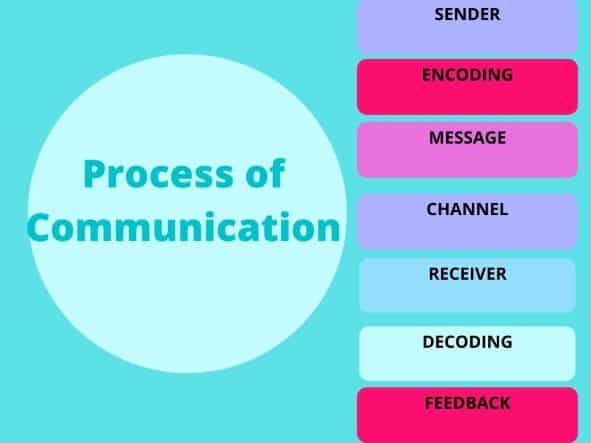Process of Communication:
The communication process starts with the sender who frames his message and finds a suitable medium to convey it to the receiver. The receiver then gives his feedback to the sender. You may be wondering, what are the steps in the process of communication? There are 7 different elements for the process of communication.

The following blog explains the process of communication in detail:
Sender:
The sender is the person who starts the process of communication. He frames the message and conveys it to the receiver.
Encoding:
It stands for using appropriate words and symbols to convey your message to the receiver. The encoding consists of both verbal and non-verbal communication. So, the sender decides which words are suitable to convey the message effectively. Additionally, the sender chooses the best signs, symbols and body language to frame the message.
Message:
Once the encoding takes place, the sender creates his message which he wants to convey. The message can be in the form of oral and written communication.
Channel:
After the message, the sender chooses the appropriate medium to send his message to the receiver. The medium is selected based on the urgency of the message. If you want to maintain the record, then written communication is important; however, oral communication is more important if you want to convey the message urgently.
Receiver:
The receiver is the person who receives the message. His understanding of the message depends on his knowledge of the subject matter, experience, trust, and relationship with the sender.
Decoding:
After receiving the message, the receiver interprets the sender’s message and tries to understand it. Effective communication occurs if the receiver understands the message in the same sense and the spirit in which the receiver wants to convey it.
Feedback:
Feedback is the final step in the process of communication. It ensures the receiver has received the message and interpreted it correctly. The feedback can be in the form of verbal or non-verbal communication that includes asking questions, discussions, nodding head etc.
Note:
Noise is a barrier in communication. There are chances when the recipient does not receive the message sent by the sender.
For related topics visit our Business Communication Page.
Read the related blogs:
Principles of Effective Communication

